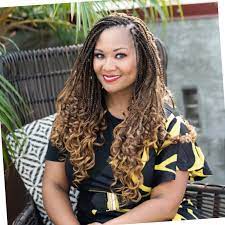by Katharine Stewart
I’ve read a lot of cover letters. Some of them have been okay, some have been pretty cringey, and some have been jaw-droppingly good. I’ve also been on a lot of search committees, enough to know that people have lots of different ideas of what makes a cover letter great. But I’ve also learned that there are some things that nearly everyone, at least the folks on the academic and administrative search committees on which I’ve served, seem to like. In this fifth post in the Your Leadership Journey blog series, I’ll share some ideas for how you can take the lessons of the first four posts and turn them into a cover letter that goes beyond the realm of “okay” and helps search committees understand not just you, but you and your personal mission.
One of the tasks of a cover letter is to make connections between your experience and the responsibilities of the position or the qualifications listed as necessary or desired for the position. If you’ve been following this series from the start, you already have some practice in this, because you did a similar task as your homework for the second post (“You are More Qualified than You Think”). For that post, you connected your past leadership actions to the leadership opportunities you identified in your current environment. For a new position, I recommend you start by listing your leadership actions on one side of a page, and the responsibilities and qualifications from the job posting on the other. Those responsibilities and qualifications represent the leadership opportunities within that job’s environment. Then you can literally draw the lines that connect one or more of your previous leadership actions with the leadership opportunities in that job.
By making these connections more clearly in your own mind, you’ll be better prepared to write your cover letter. You’ll be able to say not only, “I’ve done something similar to that particular task you’ll need this new person to do,” but also, you’ll be able to say specifically what you learned through your past leadership actions that you would apply to the tasks or opportunities in the new role. Some of the best cover letters explain the results the applicant has gotten through one of their past leadership actions, and tell how they would apply a similar strategy to one of the key responsibilities of the new job. This exercise of “drawing the lines” between your past leadership actions or accomplishments and the responsibilities listed in the job posting takes some time, but it can help you speak much more specifically and clearly to how you are prepared for the role.
The second task of a cover letter is one that is often less emphasized, but based on my experience, when it’s done well, it gets the attention of search committees and hiring managers. The first task was clarifying how your experience connects with the new job. This second task is about why you connect with it. Part Three of this series was about your personal mission, or your “Big Why.” And Part Four of the series asked you to read a job posting or two and write down your thoughts about how that job connected to your personal mission, the ways in which you saw the responsibilities of the job connecting to your “Big Why.” In a cover letter, unlike in your CV or resume, you have an opportunity to do more than say what you’ve done; you can explain why you did it and what motivates you. One way to do this is to use a paragraph in your cover letter to talk about your personal mission. You probably know where this is going – another homework assignment. Using your notes from Part Four’s homework, draft a paragraph that you could include in a cover letter for the job posting you picked out. Start by writing a sentence or two about your mission and why it’s important to you, and then a sentence or two about what you’ve achieved in your current or past roles that you think are great examples of how you’ve made your mission a reality. Finally, share a sentence or two about the specific ways you see this new job connecting to your mission, and specifically how you can imagine applying your values to the tasks and responsibilities of the role. This is a challenging task, but practicing this can help you not only write stronger cover letters, but also help you use your personal mission to help you find the jobs that really connect with your goals and priorities.
Katharine Stewart is the senior vice provost for faculty and academic affairs and a professor in the department of psychology at NC State University. She is also the owner of Katharine Stewart Consulting, LLC. Katharine is dedicated to helping faculty and academic leaders develop successful and joyful careers and to helping universities make the most of their leadership search processes. Learn more about Katharine here.







